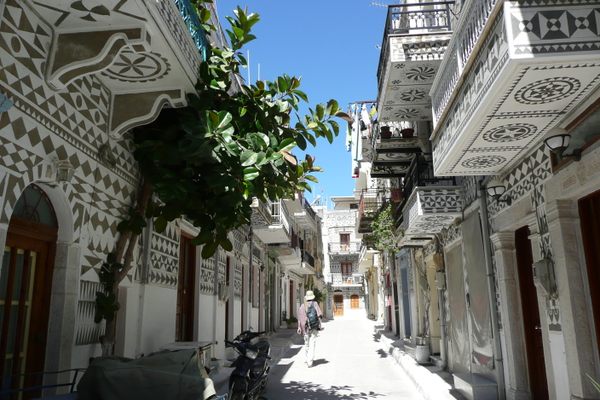Nea Moni
This 11th-century Greek monastery has renowned mosaics and relics of a brutal past.
According to legend, three monks miraculously found an icon of the Virgin Mary hanging from a myrtle branch on the island of Chios. The Nea Moni, or New Monastery, now stands on the site of this discovery, and it contains both centuries-old artwork and an ossuary filled with bones from the area’s greatest tragedy.
Per the institution’s founding story, those three monks visited Constantine IX, then exiled on the nearby island of Lesbos. Told the story of the icon and a vision that he would become emperor, Constantine promised the monks that if he ascended the throne, he would build a monastery at the site of the miracle. When Constantine IX became emperor of the Byzantine Empire in 1042, he made good on his promise.
Early on, the monastery gained considerable wealth and was one of the richest in the Aegean. Home to hundreds of monks at its peak, the monastery was known for its collections of religious artifacts and beautiful decorations.
But in 1822, the Ottomans attacked the island during the Greek War of Independence. During the destruction of Chios, also known as the Chios Massacre, tens of thousands of Greeks were killed by the Ottomans, including those who had rushed to Nea Moni seeking sanctuary. The Ottomans stormed the monastery, slaughtering many and setting fires that burned victims alive.
The monastery has been restored, but never to its full size and glory. Converted to a convent in 1952, Nea Moni listed a total of three nuns as residents in a 2001 census. Named a UNESCO World Heritage site, the site’s beautiful features, representative of the “second golden age of Byzantine art,” are balanced by a visit to the ossuary, which contains the skulls and bones of the victims who died during the Ottoman attack, some of which show evidence of sword wounds.
















Follow us on Twitter to get the latest on the world's hidden wonders.
Like us on Facebook to get the latest on the world's hidden wonders.
Follow us on Twitter Like us on Facebook